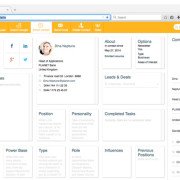Why Sales Training Is Wasting Your Money

According to the American Society of Training and Development, companies spend about $20 billion a year on sales training. So it might come as a shock to hear that 87% of all information learned at sales training is lost after just thirty days.
That means out of every $100,000 you or your company invests into training, $87,000 is gone after just one month. And out of $20 billion, that’s $17.4 billion that disappears every year.
I spoke recently with Steve Amman, the Managing Partner at salesmeddic.com, who walked me through the top four reasons that sales training fails to have a long-term effect, and how to get the most out of your training investment.
1. Lack of Follow-Up Coaching
“As soon as [sales reps] leave the training and start applying it to their accounts,” says Steve, “they find themselves in situations where they say, ‘oh, this is different. We didn’t cover that in training… And because they’re new to the methods, it’s easier for them to revert back to their old habits.”
“Training [sales reps] in something new requires follow-up coaching,” he continues. Otherwise there’s no one there to help reps get through this awkward period.”
Luckily, you’ve already got a great set of coaches within your organization, your front-line managers. Managers who have been trained to help reps find the blind spots in their deals and who reinforce what reps have learned in their training are in the best position to coach their reps effectively.
Without follow-up coaching, you might as well pour your training budget down the drain, because that’s basically what happens when reps give up on what they’ve learned.
2. Front-Line Managers Speak a Different Language
For new reps, going through a sales training is like learning a new language. They’re finding a new way to speak with clients and manage a sales process more thoroughly.
What’s surprising is that in more than half the cases that Steve has encountered, reps come back from training only to find that their managers speak a different language. This not only confuses reps, it also has some serious consequences.
“What you end up with is distrust and frustration. When it comes time for an inspection, there are different interpretations on whether an opportunity should be in best case, commit, or pipeline, which often leads to inaccurate forecasts by the managers.”
In these cases, usually one of two things happens: either reps ignore their managers and struggle to implement what they’ve learned, or, more often, they just abandon what they’ve learned and do things their manager’s way.
When sales reps and their managers share a common language of qualification and inspection, that’s when you start to get complete engagement.
3. Lack of Executive Engagement
It happens too often that executives focus more on the results than the process and don’t see the need to create an environment that encourages learning and growth.
According to Steve:
Training and coaching must be about engagement, not compliance.
If executives are slamming their teams for not meeting quota rather than helping them succeed, you’ll also find an environment where the effects of training drop off quickly, “Executives need to go from ‘Command and Control’ to ‘Sense and Response,’” says Steve, otherwise “you’ll end up with individual stars, but not holistic engagement.”
Out of ten reps that go through training, two or three usually start to see significant results. The rest might see something happen, but not much.
But once you have executives that are actively involved and create a growth-centered environment, “you’ll start to have a 30-50% improvement in sales performance in those other eight reps, and that’s a lot of additional revenue.”
4. Training Material Isn’t Embedded Into the Sales Tools
How many times has the training material you came back with ended up sitting on a shelf in a binder, or in a powerpoint deck you couldn’t find when you most needed it?
If the training material isn’t embedded into the tools and CRMs that reps are using on a daily basis, your reps are going to end up with exactly the loss of information most trainees suffer from.
We’ve seen a 2X sales performance improvement when training material is embedded in the CRM.
“The numbers are hard to believe. After our MEDDIC training, there is a 25%-50% increase in sales performance. But when it’s embedded in the tool, we see a 50%-100% improvement across the board.”
What It Takes to Succeed
According to Steve, if you don’t have engaged front-line managers and executives who coach their reps and speak the same language, you’re just not going to have lasting results, no matter how great a sales training is.
And when something as simple as implementing training material into your CRM can double sales performance improvement, there’s no excuse not to make your training investment as effective as possible.






![shutterstock_199418969-[Converted]iseeit-logo forecast](https://now.iseeit.com/wp-content/uploads/2015/03/shutterstock_199418969-Convertediseeit-logo-180x180.jpg)





Your writing has a way of resonating with me on a deep level. I appreciate the honesty and authenticity you bring to every post. Thank you for sharing your journey with us.
I loved as much as youll receive carried out right here The sketch is tasteful your authored material stylish nonetheless you command get bought an nervousness over that you wish be delivering the following unwell unquestionably come more formerly again since exactly the same nearly a lot often inside case you shield this hike